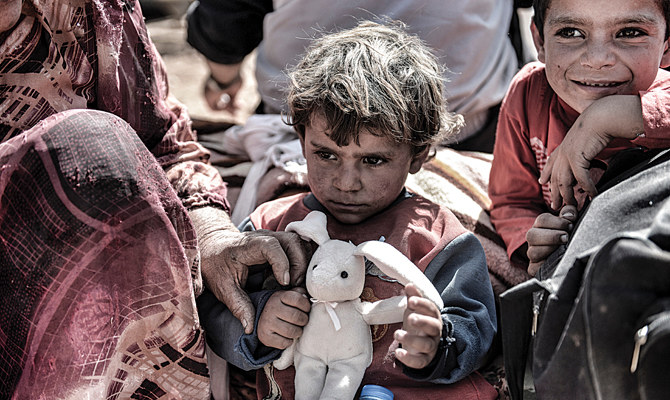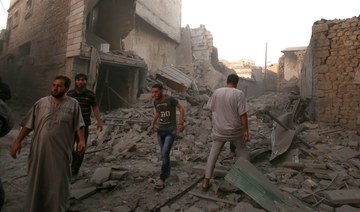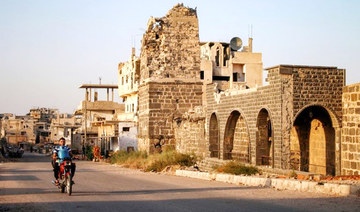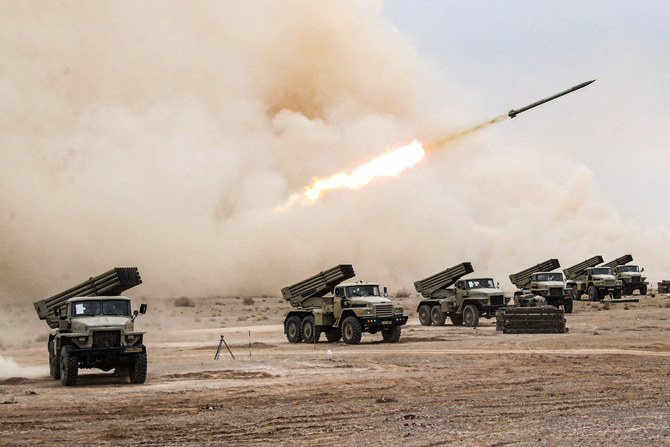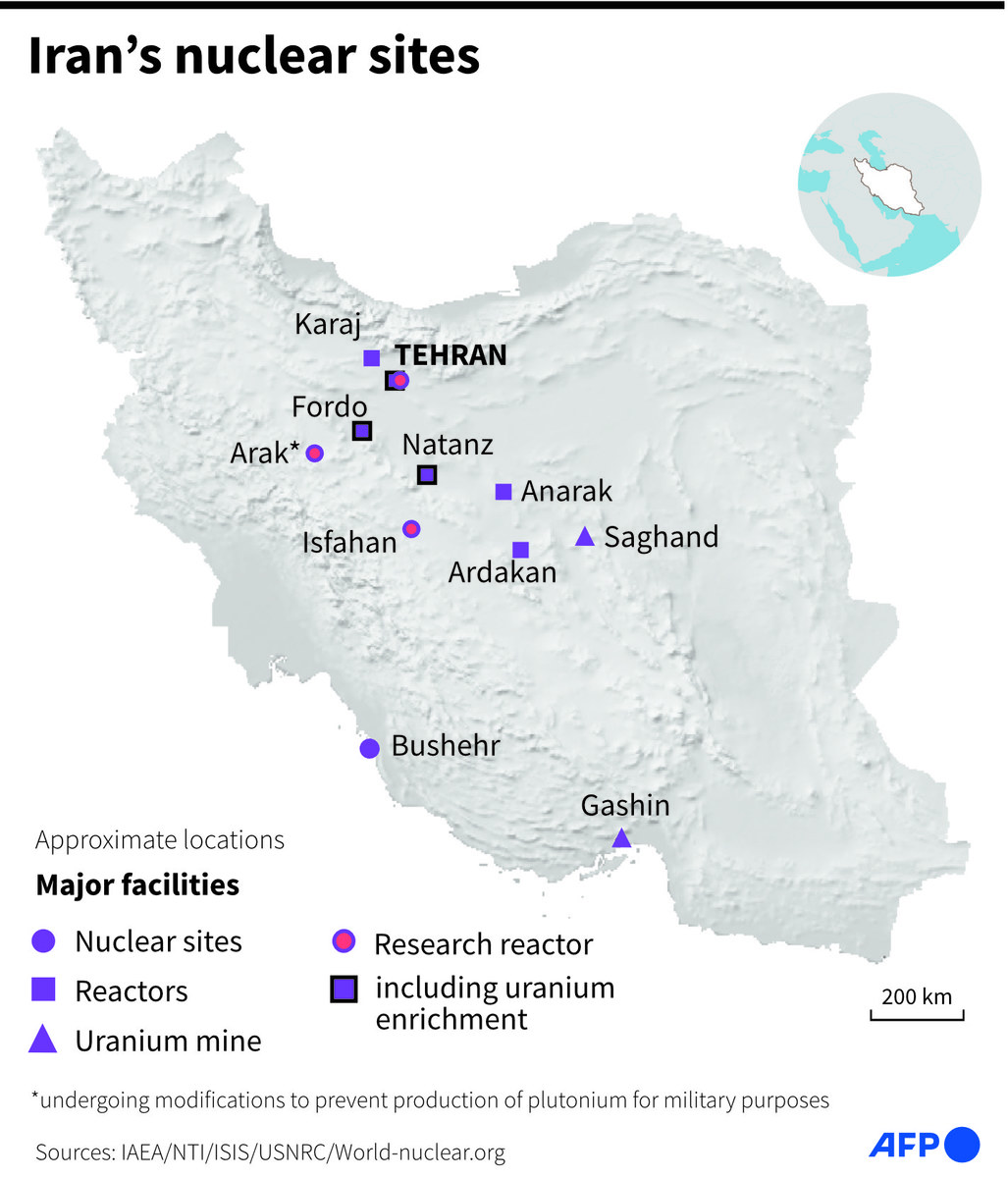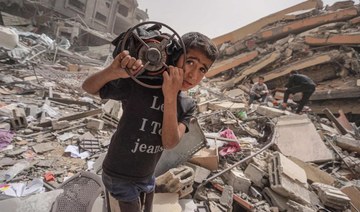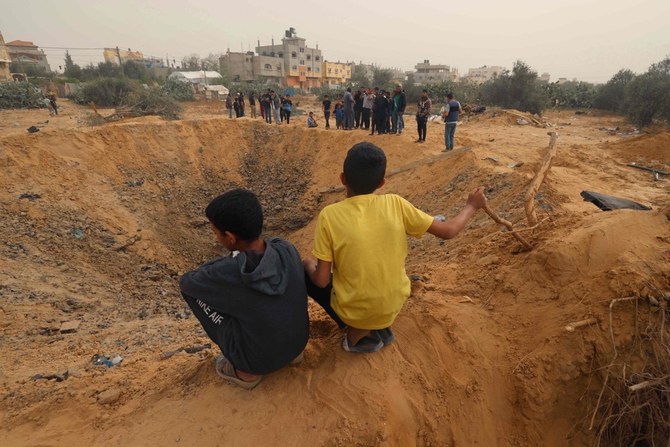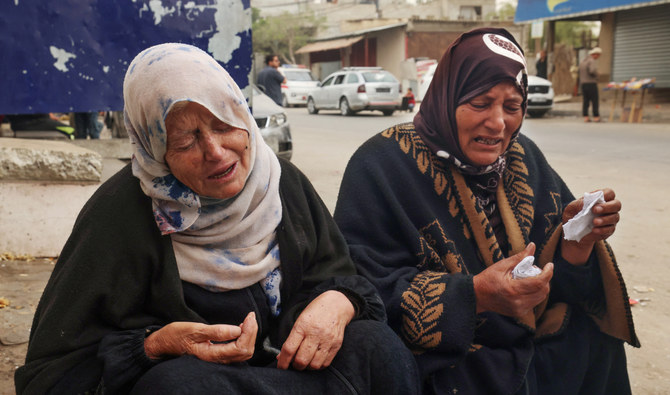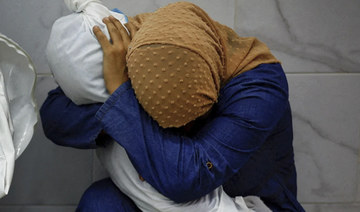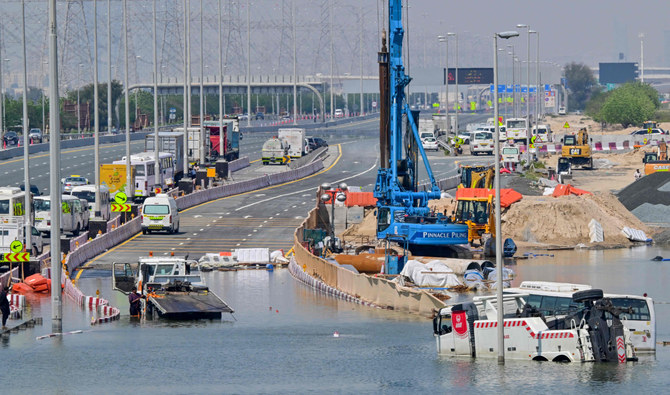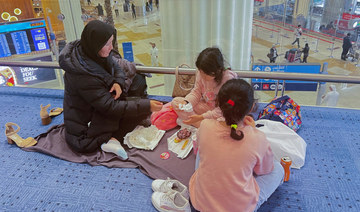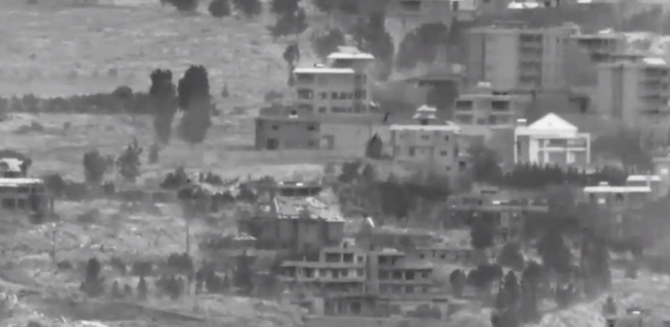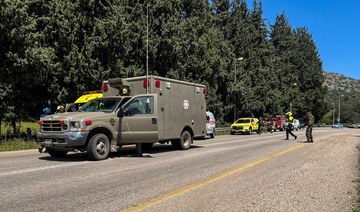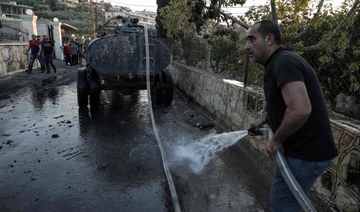JEDDAH: “Three million people — two-thirds of them women and children — are counting on your support to make this violence stop,” said Mark Lowcock, the UN’s emergency relief coordinator, to the Security Council on Thursday on the situation in northwest Syria.
Lowcock’s plea is the latest in a long line of impassioned appeals by UN officials to the international community to pressure the warring sides to give peace a chance in Syria. They have largely fallen on deaf ears.
For residents of Idlib, not only has there been no respite from war since 2011, violence has sharply intensified since President Bashar Assad’s forces launched an offensive four months ago to reclaim the governorate from opposition fighters.
At around 10 p.m. on April 28, just a few days before Ramadan, families in Kafr Nabudah, in Hama governorate, were huddled in their homes trying to focus on the approaching holy month, when they were rattled by the noise of heavy bombing in the distance.
Little did they know that the bombing was just the beginning of a torrent of death and destruction that residents of both Idlib and Hama describe as the worst they have endured in eight years of uprising and civil war.
IN NUMBERS
- 500 - Civilians killed in Idlib and Hama over the past three months.
- 440,000 - People displaced in Idlib and Hama during this period.
- 3 million - People currently caught in the crossfire in the northwest.
- 500 - People killed in the latest wave of hostilities. (Source: OCHA)
One man who knows the dread felt by the people of Idlib and Hama since that April night is Ahmad Dbis, the Turkey-based safety and security manager of the Union of Medical Care and Relief Organizations (UOSSM), a coalition of humanitarian organizations founded in 2012. At the time, he started receiving voice notes on his smartphone from his family in Kafr Nabudah.
“My mother and siblings along with their families lived in different neighborhoods of Kafr Nabudah, just an hour’s commute from Idlib,” he told Arab News from somewhere near the Turkey-Syria border. “We could not communicate via telephone lines but the internet was still working.
“In the messages, I could hear the air strikes in the background. It was unreal. I could not believe the bombing was happening again.”
Dbis’ family told him it was the most intense air assault they had experienced since the beginning of the war.
“We received information from fellow medical staff that moving cars were being targeted (by regime forces) in that part of Syria,” he said. “People were either at home with their families or out stocking up on supplies for Ramadan.”
April was the month the Syrian military, backed by Russian warplanes, launched a fierce onslaught on rebel strongholds in Idlib and Hama. The offensive, which continues today, has killed hundreds of combatants and civilians, destroyed civilian infrastructure and displaced tens of thousands of Syrians, according to the UN and local relief organizations.
A day after Lowcock called on the Security Council to take “meaningful action” to protect civilians in Idlib, Russia, whose military has been backing Assad since 2015, announced that a cease-fire by Syrian regime forces would come into force on Saturday morning in the “de-escalation zone.”
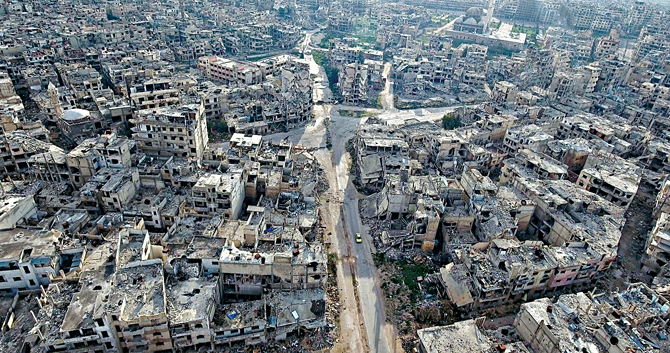
Syrian cities in the northwest have been devastated by regime bombing. (Shutterstock)
In September 2018, Iran, Russia and Turkey announced an agreement that was supposed to turn large parts of Idlib into a buffer zone where attacks would be prohibited. Opposition groups were expected to remain in areas where they were already present, while Russia and Turkey would patrol the zone.
However, the collapse of a conditional cease-fire on Aug. 5 has created a dangerous situation for civilians in a governorate whose population has swelled from 1.5 million to 3 million due to the war. Nearly half of the newcomers are Syrians who have already been forced to flee their homes multiple times.
At one point during the conflict, Assad’s position looked precarious, but he has steadily regained control of most of Syria with the help of Russia and Iran. Assad’s forces are now trying to retake Idlib from rival factions that have an estimated 30,000 fighters under their command.
Dbis said the regime’s Idlib onslaught caught humanitarian organizations off guard. Just a few agencies were in a position to help those in need, he said, adding that the available aid was not enough to meet the needs of the tens of thousands of displaced civilians. According to him, some families in the war zone continue to survive on one meal a day.
“Hospitals or medical centers that once took in 2,000 to 3,000 patients were forced to admit up to 6,000 patients coming in from different areas affected by the air strikes. This, for any medical facility, was an impossible situation,” Dbis told Arab News.
“A patient could be paid barely a few minutes’ attention at most. Supplies were already scarce. The air strikes targeted residential areas, medical centers and major hospitals, one of which was operated by UOSSM. As of today, 50 hospitals and medical centers have been put out of operation.
“Eventually medical staff and some volunteers had no choice but to provide mobile medical services. They drove around and tried to find those injured or in need of help. But even those cars or ambulances were targeted.”
Over the last three weeks … dozens of communities have emptied out in northern Hama and southern Idlib. Satellite imagery shows that entire towns and villages have been razed to the ground.
Ahmad Dbis, UOSSM safety and security manager
The situation for pregnant women was appalling, Dbis said, adding that they had no place to go to deliver their babies. Many of them were compelled to give birth inside the camps, which had no medical equipment and water. He added that some tents in most camps housed up to 25 people at a time without bathrooms.
“Those who were already seeking medical treatment for their chronic diseases or previous injuries were now left with nothing,” Dbis said. “It was impossible to get these people to nearby hospitals or care centers. At least 30 medical workers have been killed in the line of duty and dozens of others have been injured.
“No one knew where to go or what to do. Some sought shelter in nearby camps, some spent nights in cars and abandoned basements, while others slept under trees — any place they assumed was safe from deadly air strikes.”
In his Aug. 29 briefing to the UN, Lowcock painted a similar grim picture: “Over the last three weeks … dozens of communities have emptied out in northern Hama and southern Idlib. Satellite imagery shows that entire towns and villages have been razed to the ground. Most of those who can, are fleeing northwards further into Idlib governorate and closer to the Turkish border. Those who stay behind are cowering in basements or in what is left of their homes.”
UOSSM says at least 878 civilians have been killed in northwest Syria since April, nearly half of them women and children. It puts the number of wounded during the same period at 1,800. Dbis, who is familiar with the area, estimates that almost 750,000 people have been displaced as a result of the air strikes and fighting in northwest Syria, most of whom are currently scattered in towns along the border with Turkey.
Many of those who have fled their homes in Hama and Idlib have left behind their only sources of income. Some owned pharmacies, mini-markets and barbershops. Farmers, who raised crops in what is considered some of Syria’s most fertile land, cannot afford to rent accommodation elsewhere or to cross the border to Turkey. People of these two governorates were already in dire need of assistance before the regime launched its offensive.
Jens Laerke, deputy spokesperson of the UN Office for the Coordination of Humanitarian Affairs (OCHA), told Arab News that various UN agencies are in contact with health facilities in Idlib and surrounding areas. Relief supplies are being delivered across the border from Turkey, where OCHA has a Syria crisis coordination office in Gaziantep.
The Britain-based Syrian Observatory for Human Rights says that the death toll in Hama and Idlib since April has risen to 1,039 civilians, including 259 children. This includes civil defense workers and ambulance team members.
The Syrian civil war’s estimated toll stands at more than 500,000 dead or missing. Since 2011, more than 5.6 million people have fled the country, with another 6.6 million internally displaced, according to the UN.



